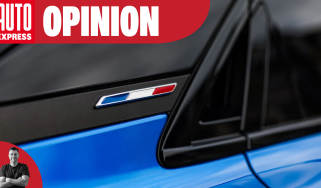Used Toyota RAV4 (Mk3, 2006-2012) review: easy to live with, but still pricey
A full used buyer’s guide on the Toyota RAV4 featuring the RAV4 Mk3 (2006-2012)
Verdict
Few people buy an SUV of any size to take it off-road, but if that’s what you want to do the RAV4 makes more sense than many of its rivals as it’s surprisingly accomplished in the rough. If you take this route, make sure you buy one of the torquey diesel-engined versions and opt for four-wheel drive instead of a front-wheel-drive example. We’ve always liked the RAV4’s blend of usability and reliability, yet it’s never been a pacesetter when it comes to driving pleasure or used value. Strong residuals mean you’ll pay more for a second-hand RAV4 than for many of the alternatives. But if you want a car that’s easy to own, look no further.
As the third-generation car launched in 2006, it’s now getting rather long in the tooth, and there are better small SUVs around. But with nearly all later models coming in at under £10,000 (and high-mileage early ones scraping under £2,000), the Mk3 Toyota RAV4 is a good-value workhorse.
History
The RAV4 Mk3 hit dealers in February 2006 in 2.0 VVT-i (petrol) or 2.2 D-4D (diesel) forms. The petrol engine was offered with five-speed manual or four-speed auto gearboxes; the diesel came in 140 (134bhp) or 180 (175bhp) forms, both with a six-speed manual. A high-spec XT-R edition arrived in January 2008, six months before the sporty 2.2 D-4D SR180. From September 2009 the 2.2 D-4D engine got an automatic option, plus a boost to 148bhp, while the 2.0 VVT-i was replaced by a more efficient 2.0 Valvematic unit, offered in 4WD CVT or FWD manual forms.
A 2010 facelift brought styling changes, and the trim options were cut to only XT-R and SR, with extra kit for the former.
Which one should I buy?
Toyota has only offered this RAV4 as a five-door, with most buyers choosing the 2.2 diesel. This muscular, frugal engine provides towing and cruising abilities the petrol units can’t match, but it’s not generally as reliable. The manual gearbox is nicer to use than the V-matic’s CVT, although the regular auto (2.0 VVT-i and 2.2 D-CAT) is okay.
All RAV4s get alloys, heated mirrors, air-con, electric windows and a CD/tuner. XT4 trim adds an electric sunroof, dual-zone climate control, multifunction steering wheel and leather trim, while the XT5 also has sat-nav, cruise control, automatic lights and wipers plus heated front seats. The range-topping T180 brings sportier trim with run-flat tyres and 18-inch alloys, so it rides more firmly than lesser editions.
Alternatives to the Toyota RAV4 Mk3
The Qashqai’s been an incredible success for Nissan thanks to its reliability, ease of driving and user-friendliness. If you need something bigger, simply look at the brand’s X-Trail. Other SUVs you should consider include Honda’s CR-V, which is very easy to live with if a bit soulless. Ford’s Kuga is more fun and it’s tremendous value and plentiful.
Used - available now

2023 Vauxhall
Astra
26,518 milesAutomaticPetrol1.2L
Cash £15,400
2024 Vauxhall
Grandland
46,143 milesManualPetrol1.2L
Cash £13,100
2022 Vauxhall
Crossland
19,972 milesAutomaticDiesel1.5L
Cash £13,699
2024 Vauxhall
Crossland
27,527 milesManualPetrol1.2L
Cash £12,999VW’s Tiguan is clinical, efficient and highly capable. Also, the often-overlooked Volvo XC60 is worth a glance, as it’s safe, stylish and well equipped. Finally, don’t forget the Land Rover Freelander 2. While it doesn’t have the best reliability record, it offers a strong image and is superb off-road.
What to look for
Steering
Clonking from the steering suggests a worn intermediate shaft. However, it could also be a slightly loose wheel nut, so try these first.
Gaskets
Head gaskets can fail on the diesel engine, so check for misfiring along with signs of a white emulsion on the underside of the oil-filler cap.
Engine
Oil consumption can be very high before Toyota will say that there’s a fault with an engine – as much as one litre every 1,000 miles is acceptable.
Headlights
A lot of owners aren’t impressed with the standard-fit headlights – which is why many have switched to Osram Night Breaker bulbs, as these are brighter.
Interior
There’s plenty of room for four (five if kids are in the back), and the front seats are supportive with plenty of adjustment. The steering adjusts for reach and rake, too, and the rear seats fold flat to create an even load bay. Boot space is good at 586 litres with the seats up, or 1,469 litres when they’re folded.
Running costs
All RAV4s need some maintenance every 12 months or 10,000 miles, with services generally alternating between minor and major. However, there’s also a major+ check every four, six or eight years depending on spec. A minor service is pegged by Toyota at £149, a major at £239 and a major+ at £299; dealers can charge less if they want to.
As all RAV4 engines are chain-driven, there are no timing belts to replace. However, the brake fluid should be renewed every other year at £39, while the air-con should be cleaned each year for £15; a full refresh of the system every two years is recommended, at £60. Fresh coolant is required every 10 years, at £80.
Recalls
There have been four Mk3 recalls, the first in February 2010. Cars from February 2009 to January 2010 could suffer from the throttle pedal not returning to idle; there were no crashes, though. Some pre-August 2010 RAV4s had a faulty rear suspension arm; Toyota recalled them in September 2012. A window switch short circuit in September 2006-December 2008 cars led to an October 2012 recall. The most recent action came in April 2014; some RAV4s made up to November 2008 had faulty airbags.
Driver Power owner satisfaction
For a car that debuted over a decade ago, a 123rd placing in its most recent appearance in our Driver Power survey shouldn’t be a surprise. Practicality and build quality are the highlights (54th and 72nd respectively), but 146th for running costs, 140th for in-car technology and 133rd for ride quality are disappointing.







